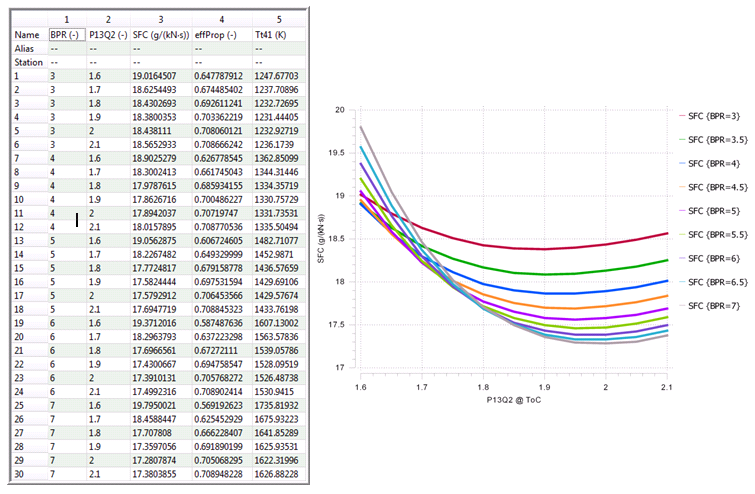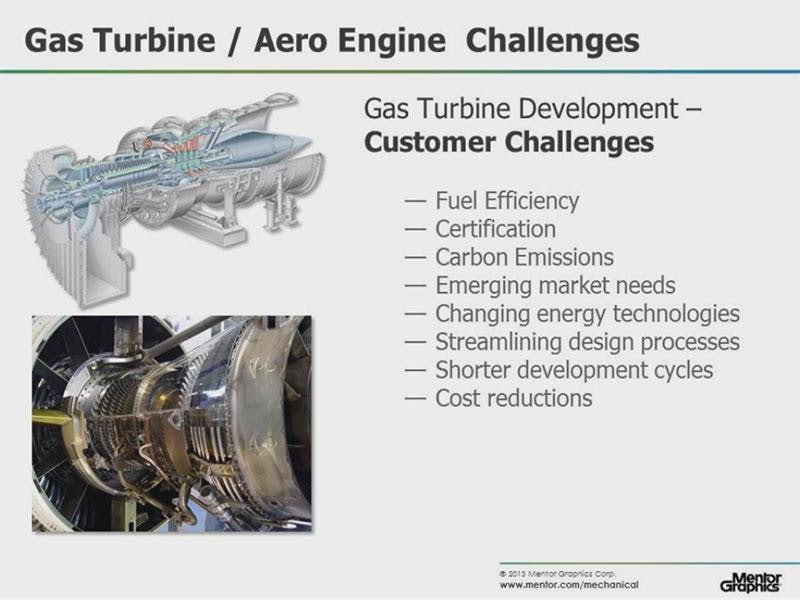This is a beta 1.8a version of the EngineSim program. If you find errors in the program or would like to suggest improvements, please send an e-mail to nancy.r.hall@nasa.gov.
- The AxSTREAM® software platform for multidisciplinary design, analysis and optimization provides an integrated and streamlined approach to turbomachinery design. This best-in-class software solution encompasses the complete process for radial, axial and mixed flow turbomachinery design. This includes gas and steam turbines, compressors.
- Rush Hour Gas Station lies within Games, more precisely Simulation. The most popular versions among the program users are 3.5 and 1.0. Rush Hour Gas Station was developed to work on Windows XP, Windows Vista, Windows 7, Windows 8 or Windows 10 and can function on 32-bit systems. Our antivirus analysis shows that this download is safe.
Gas turbine simulation is an integral part of the design process. Original equipment manufacturers (OEMs) demand robust, fast and accurate solutions to reach optimized designs the first time. Ansys offers a range of solutions including, but not limited to: Aerodynamic performance. Combustion, acoustics and aerothermal. The Gas turbine Simulation Program GSP is NLR’s primary tool for gas turbine engine performance analysis. This is a beta 1.8a version of the EngineSim program, and you. This version includes a ramjet simulation. To make a choice, click on either the arrow or the current choice word, hold down.
The older Version 1.7c is still available, if you prefer. The older version encountered some loading problems with the most recent Java security patches.
This page contains an interactive Java applet to explore the various factors which affect jet engine performance. All of the information presented by the applet are available within the Beginner's Guide to Propulsion. You should start with the slide describing the gas turbine engine.
EngineSim
With this software you can investigate how a jet (or turbine) engine produces thrust by interactively changing the values of different engine parameters.

Recently (2013), there have been several security patches added to the Java Runtime Environment (JRE). As a result of the security patches, EngineSim does not always perform as it did in the past. One patch does not allow the display of .gif images from a local directory. The patch prohibited loading of the program altogether. The current version works around this problem by not including any photos.
Due to IT security concerns, many users are currently experiencing problems running NASA Glenn educational applets. The applets are slowly being updated, but it is a lengthy process. If you are familiar with Java Runtime Environments (JRE), you may want to try downloading the applet and running it on an Integrated Development Environment (IDE) such as Netbeans or Eclipse. The following are tutorials for running Java applets on either IDE:
Netbeans
Eclipse
Other problems may occur while running the applet due to it being outdated. Until it is updated, HERE is another application that demonstrates the simulator.
There are several different versions of EngineSim which require different levels of experience with the package, knowledge of jet engines, and computer technology. This web page contains the on-line version of the program. It includes an on-line user's manual which describes the various options available in the program and includes hyperlinks to pages in the Beginner's Guide to Propulsion describing the math and science of the jet engine. More experienced users can select a version of the program which does not include these instructions and loads faster on your computer. You can download these versions of the program to your computer by clicking on this yellow button:
With the downloaded version, you can run the program off-line and do not have to be connected to the Internet. You can also investigate the effects of engine performance on aircraft range by using another interactive applet called RangeGames.
Undergraduate Version - EngineSimU
There are special versions of EngineSim for undergraduate students who are studying the basics of turbine propulsion. These versions let you reset the limits on many of the design variables. There are on-line and off-line applet versions of the program and an off-line application version. With the application version, you can save your design to a file, input a previous design from a file, and obtain output files for printing. To run the application version, you must have the Java Developers Kit (JDK) installed on your computer.

GENERAL INSTRUCTIONS
This program is designed to be interactive, so you have to work with the program. There are several different types of widgets that you use to work with the program.
- There are a variety of choices which you must make regarding the analysis and the display of results by using a choice box. A choice box has a descriptive word displayed and an arrow at the right of the box. To make a choice, click on either the arrow or the current choice word, hold down, and drag to make your selection. The new selection is indicated by a change in the word. A recent security patch has changed the way that choice boxes operate. This can result in a condition where you can't change from Imperial to Metric units. To overcome this problem, we have included an Override option on the choice boxes on the control panel. If you get stuck, click on Override then click on your choice; it will then work correctly.
- The current values of the design variables are presented to you in text boxes. By convention, a white box with black numbers is an input box and you can change the value of the number. A black box with yellow or red numbers is an output box and the value has been computed by the program. To change the value in an input box, select the box by moving the cursor into the box and clicking the mouse, then backspace over the old number, enter a new number, then hit the Enter key on your keyboard. You must hit Enter to send the new value to the program.
- For most input variables you can also use a slider located next to the input box. Click on the slider bar, hold down and drag the slider bar to change values, or you can click on the arrows at either end of the slider. If you experience difficulties when using the sliders to change variables, simply click away from the slider and then back to it.If the arrows on the end of the sliders disappear, click in the areas where the left and right arrow images should appear, and they should reappear.
- Some graphics decisions are selected by pushing buttons. To push a button, move the cursor over the button and click the mouse.
If you see only a grey box at the top of this page, be sure that Java is enabled in your browser. If Java is enabled, and you are using the Windows XP operating system, you need to get a newer version of Java. Go to this link: http://www.java.com/en/index.jsp, try the 'Download It Now' button, and then select 'Yes' when the download box from Sun pops up.
SCREEN
The program screen is divided into four main parts:

About GSP
The Gas turbine Simulation Program GSP, a component based modelling environment, is NLR’s primary tool for gas turbine engine performance analysis. GSP's flexible object-oriented architecture allows steady-state and transient simulation of any gas turbine configuration using a user-friendly drag & drop interface with on-line help running under MS-Windows. Gas turbine configurations are simulated by establishing a specific arrangement of engine component models in a model window (view an example model window).
What is GSP
Gas Turbine Simulation Program Free Online
GSP is a generic modelling tool capable of modelling virtually any gas turbine engine configuration including (external) loads (like water breaks, pumps, generators, etc). GSP is primarily based on 0D-modelling (zero-D) of the thermodynamic cycle of the gas turbine. This implies that the flow properties are averaged over the flow cross section areas at the interface surfaces of the component models (inlet and the exit). GSP utilizes component model stacking to create the thermodynamic cycle of the engine of interest. Input of the model configuration is the cycle design, or any known reference point (or preferably several points) of a new engine. Information needed for the cycle configuration, eg. turbine and compressor maps, is readily available from the manufacturer or from the internet (e.g. manufacturer fact sheets, ASME papers, etc.).
Besides being a performance prediction tool, GSP is especially suitable for parameter sensitivity analysis such as: ambient (flight) condition effects analysis, installation (losses) effects analysis, analysis of effects of certain engine malfunctioning (including control system malfunctioning) and component deterioration effects analysis. Input for the analysis is based on the model configuration (e.g. fuel flow can be specified to calculate the generated power, or when the fuel flow is set as a state variable the power can be specified to calculate the corresponding fuel flow). By running the simulation, output data set in the component property window will be displayed in a table, which can be visualized by a build-in graph tool. Data available includes the gas conditions (temperatures, pressures, mass flows, areas, speeds, etc) and the gas composition (gas species are available since GSP uses a full Thermo-chemical gas properties model). The simulation results can be exported to tab separated files, which can then be used for custom analysis (e.g. comparison of simulation data to running equipment measured data).
GSP history
The development of GSP started at the Delft Technical University (TUD, Aerospace dept.) in 1986. At TUD, NASA's DYNGEN (NASA TN D-7901, 1975) program was used for jet- and turbofan engine simulation. However, DYNGEN appeared to have many problems with numerical stability and had a poor user interface. As a consequence, GSP was developed, inheriting features from DYNGEN. Significant deficiencies of DYNGEN were fixed in GSP; especially the stability, the speed of the numerical iteration processes and the user interface were improved. It appeared that an additional amount of improvements, adjustments and extensions to the GSP program were necessary before useful simulation of a generic jet engine was possible. Development continued at NLR, where GSP has been converted first to FORTRAN77 and later when desktop computers gained computational power for acceptable prices to Borland® Delphi(TM). Delphi allows rapid adaptation due to the use of object orientation, offering excellent means to maintain and extend the program.
- DYNGEN (1975)
- unstable
- slow
- poor user interface
- GSP in FORTRAN77 (1986)
- thesis of W. Bouwmans at Delft University, Aerospace faculty
- improved UI, solver, stability
- practically usable
- GSP for Windows (1996)
- rapid development using Borland® Delphi(TM)
- Object Orientation / Object Oriented design
- powerful user interface
Gas Turbine Simulation Program Free Download
Features

GSP's most interesting features are listed below
- Flexible
- any kind of gas turbine configuration
- steady-state and transient off-design simulation
- NLR-developed custom components
- user-developed custom components
- object-orientation
- user-configurable graphical & tabular output formats
- backwards compatible
- Powerful
- high execution speed on standard PC's
- multiple effects on performance
- rapid analysis of complex problems
- simultaneous simulation of multiple models (twin-engine helicopter)
- user configurable control system logic
- user configurable control over equation system
- User-friendly
- graphical user interface (MS-Windows)
- drag & drop components or models
- on-line help, user manual & technical manual
- variety of graphical & tabular output formats
- Component based
- object-oriented architecture
- 0/1-dimensional modelling
- custom components
- Extended
- various libraries with custom components
- 3rd party component development kit available (GSP CDP)
- an application programming interface for interaction with other software (GSP API)